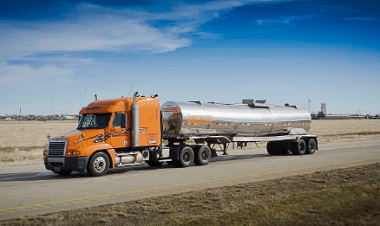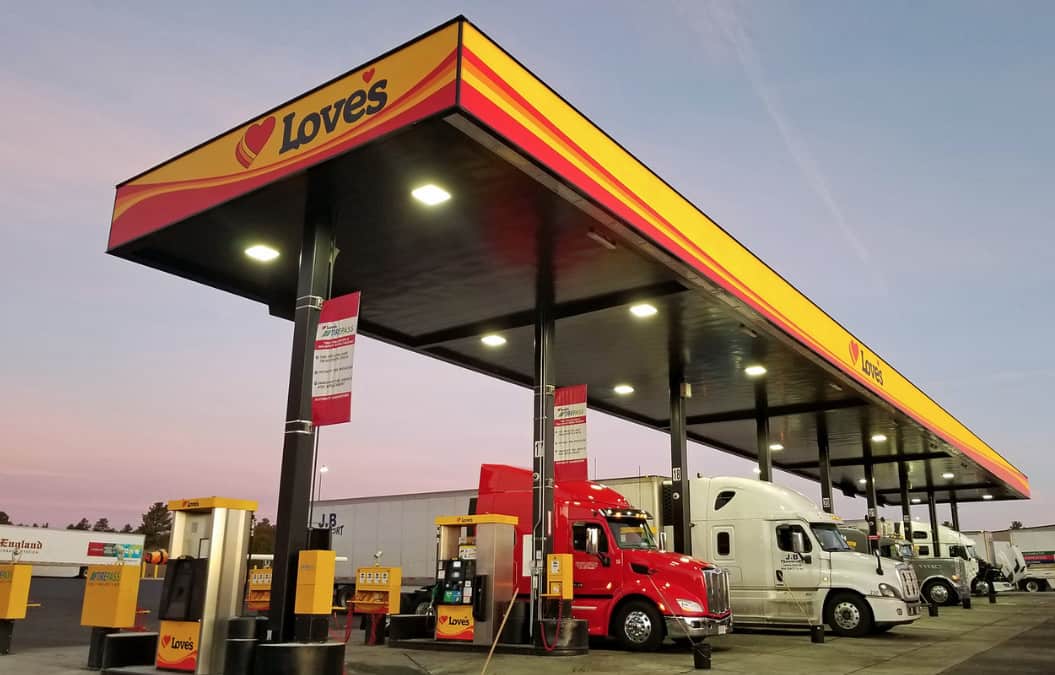A semi truck typically holds around 200-300 gallons of fuel.
Semi trucks come in various models, each with different fuel tank sizes. Here are some popular models and their corresponding fuel tank sizes:
| Model | Fuel Tank Size (Gallons) |
|---|---|
| Volvo VNL | 150 to 300 |
| Freightliner Cascadia | 100 to 300 |
| Peterbilt 579 | 100 to 300 |
| Kenworth T680 | 100 to 300 |
It is important to note that fuel tank sizes may vary based on the type of truck and its intended use. Some trucks may have larger tanks for long-haul trips, while others may have smaller tanks for local deliveries.
Fuel efficiency also plays a role in determining the range of a semi truck on a full tank. Overall, the size of a semi truck’s fuel tank depends on various factors, and it is essential for truck owners and operators to consider their specific needs when selecting a truck model.
Understanding The Fuel Capacity Of Semi Trucks
Factors affecting the fuel capacity of a semi truck
When it comes to understanding the fuel capacity of a semi truck, it is important to consider a few factors that can affect this. One of the primary factors is the size of the fuel tank. Semi trucks can have varying sizes of fuel tanks, with some holding as little as 100 gallons and others holding as much as 300 gallons or more. The size of the fuel tanks can be influenced by the type of truck and its intended use.
Another factor that can affect the fuel capacity is the fuel efficiency of the truck. Fuel efficiency is influenced by various factors such as the weight of the truck, its aerodynamics, and the type of engine it has. Trucks that are designed to be more fuel-efficient will require less fuel to travel the same distance.

In addition, the type of fuel being used can also impact the fuel capacity. Most semi trucks run on diesel fuel, which has a higher energy content compared to gasoline. This means that a truck running on diesel fuel can travel further on the same amount of fuel compared to a truck running on gasoline.
Overall, the fuel capacity of a semi truck can vary depending on factors such as the size of the fuel tank, the fuel efficiency of the truck, and the type of fuel being used. It is important for truck owners and operators to consider these factors when determining the fuel capacity of their vehicles.
Fueling Challenges And Solutions For Semi Trucks
Identifying common challenges in fueling large trucks can help fleet managers and drivers develop strategies to overcome these obstacles and reduce downtime. One of the challenges faced by semi trucks is the question of how many gallons they can hold.
The answer is not a simple one, as the size of the truck and its fuel tank can vary. load weight is common for semi trucks to have fuel tanks with a capacity of 100 to 300 gallons. This allows them to travel long distances without needing frequent refueling.
To ensure efficient fueling, it is important for trucking companies to invest in reliable fueling stations and establish fueling schedules that minimize downtime.

Implementing technologies such as fuel management systems can help track fuel consumption and identify areas for improvement. By addressing these challenges, fleet managers can ensure that their semi trucks remain fueled for optimal performance.
High Fuel Capacity Vs. Fuel Efficiency Trade-Offs
|
Larger fuel tanks have both pros and cons when it comes to fuel efficiency in different trucking operations. Pros:
Cons:
It is important for trucking operations to carefully analyze their specific needs and consider these trade-offs before deciding on the size of the fuel tank for their semi truck. |
Importance Of Fuel Capacity In Long-Haul Trucking
productivity of semi-truckstrucking, fuel capacity plays a crucial role in the range and productivity of semi-trucks. The impact of fuel capacity on range and productivity cannot be underestimated. By optimizing fuel capacity, long-haul trips can be made more efficient and cost-effective.
There are several strategies that can help optimize fuel capacity for long-haul trips. Tank size is an important consideration, as larger tanks allow for more fuel to be carried, reducing the number of refueling stops. Fuel efficiency technologies, such as aerodynamic features and engine tuning, can also help minimize fuel consumption.

In addition, proper trip planning and route optimization can ensure that refueling stops are strategically located along the route, minimizing time and fuel spent on detours. Regular maintenance and tuning of the truck’s engine can also help improve fuel efficiency and maximize the use of available fuel.
Overall, understanding the importance of fuel capacity and implementing strategies to optimize it can greatly benefit long-haul trucking operations, improving range, productivity, and cost-efficiency.
Technological Advances For Increased Fuel Capacity
Technological advances have led to increased fuel capacity in semi trucks through innovations in design and construction of fuel tanks. These advancements have allowed for larger tank sizes, enabling trucks to carry more gallons of fuel.
Alternative fuel options have also impacted tank size, as different fuels may require different storage capacities. For example, diesel-powered trucks typically have larger tanks compared to trucks powered by other fuels.
The exact impact of alternative fuel options on tank size can vary depending on factors such as fuel efficiency and range. Overall, the continuous development of technology in the trucking industry has played a significant role in increasing the fuel capacity of semi trucks, allowing for longer trips and reduced refueling stops.
Calculating The Average Fuel Capacity Of A Semi Truck
When it comes to determining the fuel capacity of a semi truck, the formula involves considering the tank size and fuel efficiency. The larger the tank size, the more gallons of fuel it can hold. On average, a semi truck can have a fuel tank capacity ranging from 100 to 300 gallons.
For example, if a semi truck has a tank size of 250 gallons and an average fuel efficiency of 6 miles per gallon, it can travel up to 1,500 miles on a full tank of fuel. However, it’s important to note that fuel efficiency can vary based on several factors such as load weight, driving conditions, and truck maintenance.
To calculate the average fuel capacity of a semi truck, you can use the following formula:
| Tank Size | Fuel Efficiency (mpg) | Total Fuel Capacity (gallons) |
|---|---|---|
| 250 gallons | 6 mpg | 1,500 gallons |
By understanding the formula and considering the tank size and fuel efficiency, you can estimate the fuel capacity of a semi truck.

Frequently Asked Questions On How Many Gallons Does A Semi Truck Hold
How Many Miles Can A Semi-Truck Go On A Full Tank?
A semi-truck can go about 5-8 miles per gallon on a full tank, which holds around 100-300 gallons.
How Many Gallons Of Diesel Does A Semi-Truck Hold?
A semi-truck can hold an average of 150-300 gallons of diesel.
How Many Miles Per Gallon Does A 18 Wheeler Get?
An 18 wheeler gets an average of 6 to 8 miles per gallon.
How Much Does It Cost To Fill Up A Semi-Truck?
A semi-truck can hold varying amounts of fuel, but on average, it can hold up to 300 gallons. The cost to fill up a semi-truck depends on the price of diesel fuel, which fluctuates.
Conclusion
The size of a semi truck’s fuel tank can vary depending on the model and purpose of the truck. On average, a semi truck can hold anywhere from 100 to 300 gallons of fuel. The larger tanks are typically found in long-haul trucks that need to travel long distances without refueling.
diesel engines to note that this capacity is for diesel fuel, as most semi trucks are powered by diesel engines. Having a large fuel capacity allows semi trucks to cover more miles and transport goods efficiently.


Leave a Reply